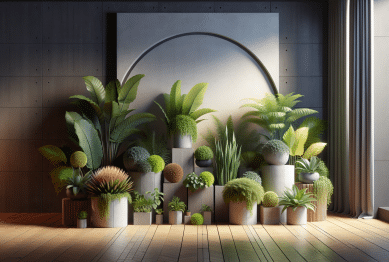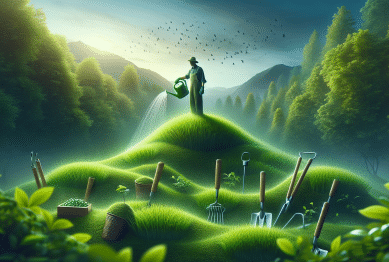Discover step-by-step how anyone can create a pollinator garden at home, boosting biodiversity and attracting butterflies, bees, and birds. Find tips and backed insights on native plants, garden design, and natural pest control to make your yard thrive.
Why Pollinator Gardens Matter More Than Ever
Pollinator gardens are gaining fresh attention as homeowners notice a decline in bee and butterfly populations outdoors. Creating a space specifically for pollinators isn’t just a trend—it’s a powerful contribution to local ecosystems and food chains. Birds, bees, and butterflies each play a unique role in pollination, supporting the health of flowering plants and even backyard produce. Building a pollinator-friendly garden also encourages natural beauty inside your own property lines, making your landscape a lively hub for wildlife activity.
Many people now realize pollinator diversity strengthens the resilience of home gardens. By introducing flowers that bloom at staggered intervals, gardeners provide a continual food source for vital insects and help keep the web of life intact. The presence of native bees, for example, aids in the production of fruits and vegetables, supporting a more robust and reliable harvest. This win-win makes pollinator gardens an appealing home project for those keen on sustainability and healthy outdoor spaces.
Pollinator habitats also offer a peaceful retreat and an educational opportunity for families. Observing bees collecting pollen or monarchs landing on milkweed sparks curiosity about nature. Well-chosen plants can transform even small spaces into pockets of biodiversity, showing how local efforts ripple outward. Ultimately, a pollinator garden, however modest, acts as a living classroom and a testament to the power of collective environmental action (https://www.fs.fed.us/wildflowers/pollinators/WhyImportance.shtml).
Choosing the Right Plants for Your Region
Selecting native plants is the foundation of a successful pollinator garden. Local species have evolved alongside local pollinators, offering the ideal nectar and pollen sources for bees, butterflies, and hummingbirds. Research by agricultural extension programs shows that diversity in bloom shape, color, and flowering season attracts a broader range of pollinators and makes the garden sustainable year-round. Using regional plant lists, homeowners can match their space and sun exposure to suitable perennials and annuals (https://www.nwf.org/Garden-for-Wildlife/About/Native-Plants).
Having a mix of flowering plants is crucial. Early bloomers like columbine and crocus provide sustenance when pollinators first emerge in spring, while goldenrod and asters support them during late summer and fall. Herbs such as lavender, sage, and thyme are also highly attractive to pollinators and thrive in kitchen gardens. Avoiding plants treated with pesticides or labeled as “double-flowered” is wise—these varieties may lack the open structure or offer less nectar for essential insects.
Practical guides from leading conservation centers often highlight the value of grouping the same species together in ‘drifts’ or clusters to attract more pollinators. This approach increases visibility and accessibility for bees and butterflies, making it easier for them to forage efficiently. Incorporating shrubs, fruit trees, and wildflowers into your landscape plan gives garden beds a layered look that appeals to both pollinators and people. The careful plant selection process ultimately determines how vibrant and inviting your outdoor habitat will become.
Designing and Planning Your Pollinator Garden
Smart garden design starts with observing sunlight, wind, and soil conditions. Most pollinators prefer sunny spaces sheltered from strong gusts, so positioning beds where they get at least six hours of light daily is key. Raised beds and borders, even small window boxes, can work beautifully for people with limited space. Well-draining soil amendments—like compost and shredded leaves—help roots thrive and boost the longevity of each plant choice.
Paths and stepping stones are not only practical but also break up planting areas, offering humans access for maintenance while creating mini-habitats for ground-nesting bees. Including a small, shallow water source like a birdbath or a flat stone will attract butterflies and provide drinking spots during hot weather. Edges lined with native grasses or groundcovers keep weeds in check and offer cover for beneficial insects, supporting a balanced micro-ecosystem.
A pollinator garden’s layout should emphasize continuous blooms, overlapping colors, and varying heights. Pinpointing which plants thrive side by side takes some research but pays off with more consistent flower displays. A garden plan drawn out on paper helps visualize transitions from early to late bloomers, ensuring there’s always food available. Seasonal updates keep the garden evolving, providing an ever-changing landscape for both viewers and pollinators in every season (https://xerces.org/publications/plant-lists/plant-lists-pollinators).
Natural Pest Control and Garden Maintenance
Avoiding synthetic pesticides is critical when supporting pollinator health. Instead, integrated pest management practices—like attracting ladybugs and planting insect-repelling marigolds—reduce harmful outbreaks while leaving pollinators unharmed. Allowing beneficial insects to thrive naturally keeps aphids and caterpillars in balance. Regularly inspecting plants for disease or stress helps address issues early, preventing major problems later in the growing season.
Mulching is another valuable garden maintenance tool. Organic mulch helps conserve moisture, suppress weeds, and introduce nutrients as it breaks down. Choosing materials like shredded bark or leaf litter creates a habitat for ground-dwelling pollinators while regulating soil temperatures. Be sure to keep mulch a few inches away from plant stems to prevent rot and encourage air circulation for healthy roots.
Pruning, deadheading blooms, and dividing perennials improve the health and appearance of the garden. Removing faded flowers signals many species to keep blooming, extending the available nectar sources for visiting insects. Rotating garden chores seasonally—such as cutting back stems for overwintering bees or refreshing water dishes—maintains a resilient garden. Gentle, routine care without harsh chemicals ensures pollinator populations stay strong and the space remains vibrant year after year (https://pollinator.org/bee-friendly-gardening).
Attracting Bees, Butterflies, and Hummingbirds Sustainably
Each type of pollinator is attracted by different garden features. Bees need open, undisturbed soil patches for nesting, while butterflies require both nectar plants and specific host plants—like milkweed—for their caterpillars. Adding logs, fallen branches, or even a bee box in a quiet garden corner boosts habitat opportunities, encouraging a self-sustaining community. Pollinator-friendly features don’t need to be complicated to be effective.
Hummingbirds look for brightly colored, tubular flowers such as salvia, bee balm, and trumpet vine. Including feeders can also help—just clean them regularly to prevent disease. Limiting or excluding artificial lights near the garden helps reduce disruption to pollinator night cycles and navigation. Leaving some parts of your garden “untidy” during the fall and winter provides hiding spots for overwintering insects and larvae.
Learning about your region’s particular pollinators unlocks even more ways to create a supportive habitat. Local university extensions often offer specific guides or workshops on pollinator garden care and adaptation. Citizens who participate in community science projects—like tracking monarchs or reporting bee sightings—directly contribute to environmental research and learn hands-on, practical gardening strategies (https://www.scientificamerican.com/article/creating-pollinator-friendly-gardens/).
Community Benefits and Resources for Getting Started
Pollinator gardens ripple out positive effects beyond a single yard. Connected patches throughout neighborhoods and cities create corridors that support wildlife movement and plant pollination over greater distances. The more people participate, the more resilient the local environment becomes. This community-wide action supports threatened species—offering hope for greater biodiversity and ecological health in urban and suburban regions.
New gardeners often benefit from seeking regional advice and connecting with organizations dedicated to conservation. Programs like “Certified Wildlife Habitat” or city-sponsored garden certifications offer checklists, tips, and even public recognition for efforts. Local garden clubs and native plant societies regularly host free seminars—an excellent place to learn and meet others with shared goals.
Online libraries, brochures, and plant finder tools from reputable organizations make starting a pollinator garden more approachable. Many public gardens and nature centers have demonstration beds open for visits, providing inspiration and real-world models for layout and species selection. With so many resources available, anyone can carry out a project that makes a meaningful impact right at home (https://garden.org/learn/articles/view/4640/).
References
1. U.S. Forest Service. (n.d.). Why Are Pollinators Important? Retrieved from https://www.fs.fed.us/wildflowers/pollinators/WhyImportance.shtml
2. National Wildlife Federation. (n.d.). Native Plants. Retrieved from https://www.nwf.org/Garden-for-Wildlife/About/Native-Plants
3. Xerces Society. (n.d.). Plant Lists for Pollinators. Retrieved from https://xerces.org/publications/plant-lists/plant-lists-pollinators
4. Pollinator Partnership. (n.d.). Bee Friendly Gardening. Retrieved from https://pollinator.org/bee-friendly-gardening
5. Scientific American. (n.d.). Creating Pollinator-Friendly Gardens. Retrieved from https://www.scientificamerican.com/article/creating-pollinator-friendly-gardens/
6. National Gardening Association. (n.d.). Creating a Pollinator Garden. Retrieved from https://garden.org/learn/articles/view/4640/








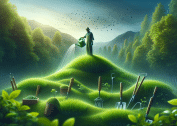
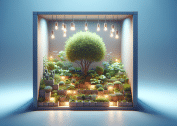
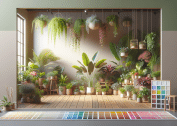
 You Can Create a Cozy Home Sanctuary Easily
You Can Create a Cozy Home Sanctuary Easily 
